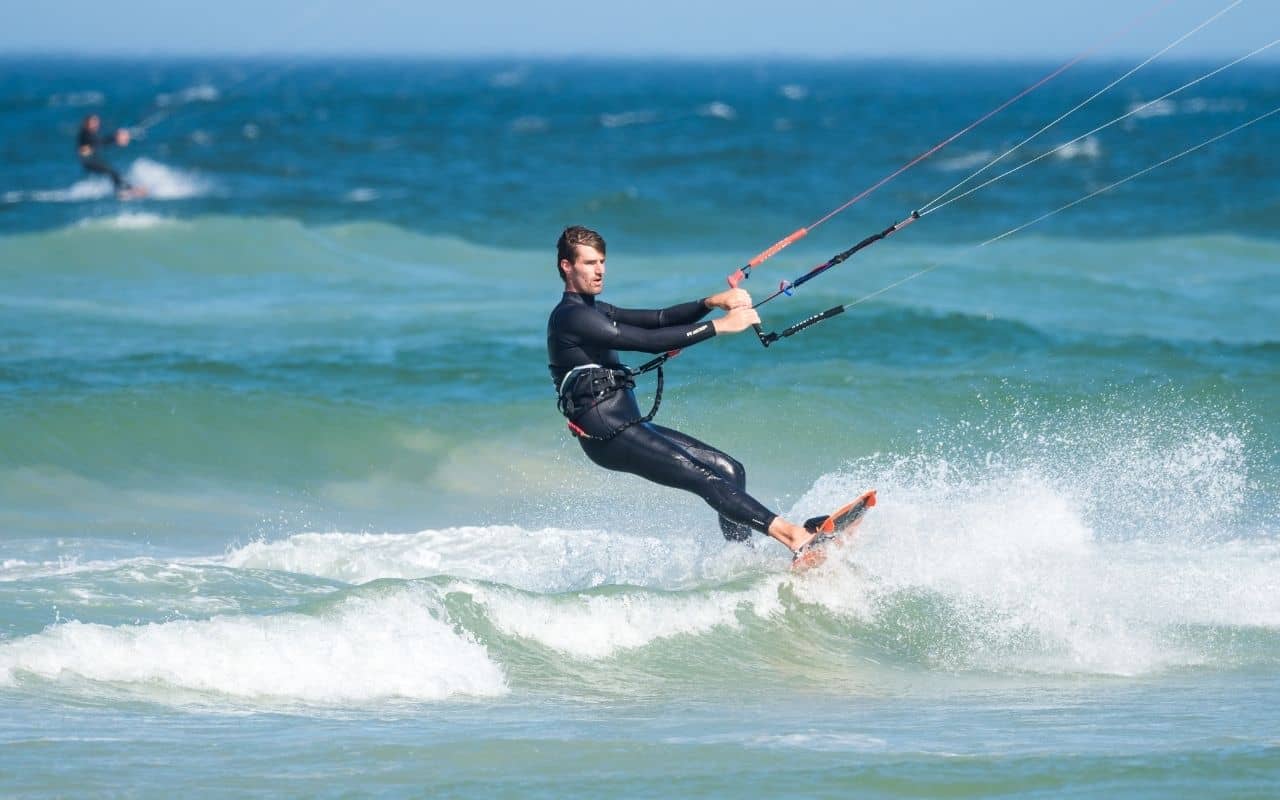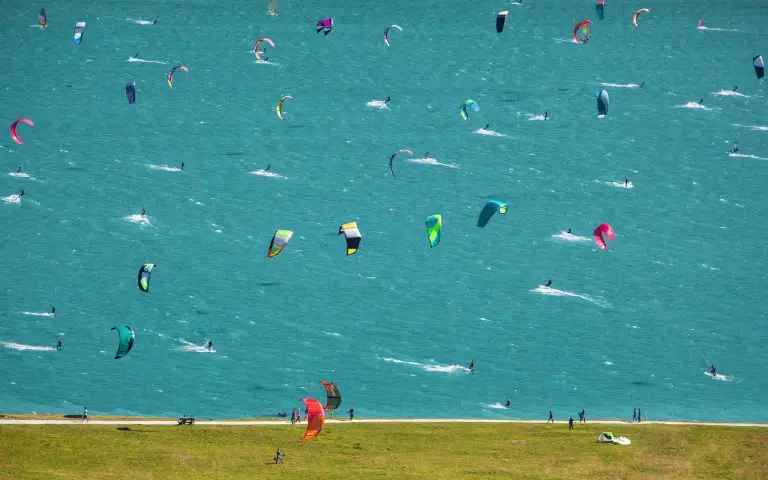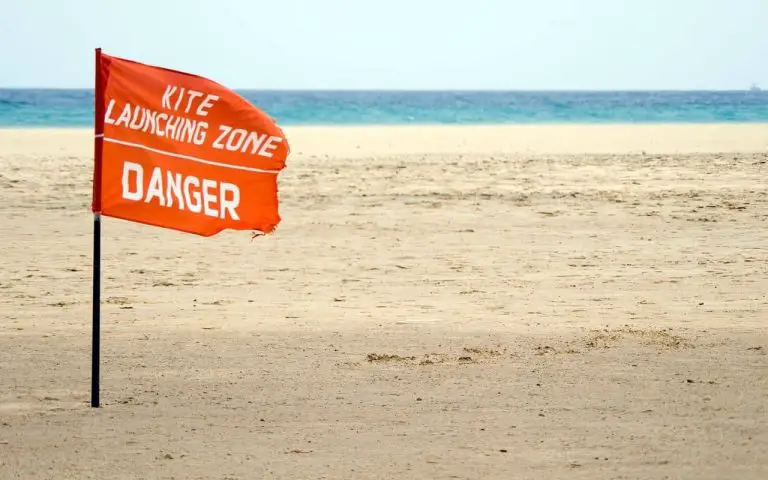How to Choose a Wetsuit For Kiteboarding

Choosing the right wetsuit for kiteboarding is not an easy task. There are many factors to consider, and it all comes down to your personal preferences.
The most important consideration will be the water temperature in which you plan to ride. If you live near cold water, having a thick wetsuit that protects you from the cold is extremely important.
In contrast, if you live around warm waters, then there might not be as much need for a thicker suit because the bodys natural insulation will help keep you warm.
In this article, we will go over some of the different types of materials and stitching techniques used in making wetsuits. So that when it comes time for shopping, youll know exactly what qualities to be on the lookout for.
Quick Links
Determine What Thickness You Will Need
The first place to start is determining what thickness wetsuit you will need based on the water temperature. If the water is warmer than 22°C (75°F), then no suit is just fine. For colder waters, neoprene suits are needed for warmth while maintaining flexibility in your joints.
The table below gives a good indication of what thickness relates to which water temperature range. However, this is a general indication and will ultimately be determined by your personal water temperature tolerance.
| Water Temperature | Thickness Required |
| <6℃ | 6/4mm |
| 6℃-11℃ | 5/4mm-5/3mm |
| 11℃-14℃ | 5/3mm-4/3mm |
| 14℃-17℃ | 4/3mm-3/2mm |
| 17℃-21℃ | 3/2mm |
| >22°C | Rashguard |
The thickness of the wetsuit is indicated by the number of millimetres in the suit, such as 3/2 or 4/3. The figures are split because a wetsuit isnt the same thickness all around. For example, a 4/3 is 4mm around the torso but 3mm around the arms and legs. This helps with the flexibility of the joints.
The thickness is calculated by adding up all the millimetre measurements, not including any fractions. Generally speaking, a thicker wetsuit will give you more buoyancy and warmth for colder waters. While thinner suits are best if youre just cruising in warmer water or dont want to deal with extra bulkiness around your body.
Make Sure To Examine The Brands Sizing Chart
If theres one thing you want to get right when selecting a wetsuit for kitesurfing, its the fit. Sizing can vary from brand to brand, so referencing the size chart for the brand you are looking at will be a good starting point.
Wetsuits are different for Men & Women, so be sure you check the correct chart when doing your research.
When it comes to fitting a wetsuit, you want to check the height and weight of the brands sizing chart. After that, the chest measurements. And the sleeve and leg lengths are the least important measurements.
Ideally, you want the suit to fit snuggly enough that it keeps you warm but doesnt restrict your movement. For a more thorough look into how to get wetsuit sizing right, click here.
Find Out How It’s Constructed?
Wetsuit construction is the biggest factor in what price you are going to pay for your wetsuit. The higher the quality, the more expensive it will be and vice versa.
Zippers
Zipper placement is one of the main differences in construction between cheaper suits and better ones. Back zippers are typically more affordable but less convenient, depending on who you ask.
Chest zippers are best for watersports because they allow the best freedom of movement. They are also more convenient to put on than back zipped wetsuits.
Zipperless wetsuits are similar to the chest placement, just without the actual zip. They are typically made from more expensive stretchier neoprene found in high-performance suits.
Seams
Seam construction plays a vital role in how watertight and flexible the wetsuit will be. There are 4 ways the seams can be done, namely; Flatlock, Glued and Blind Stitched (GBS), Fluid sealed and Taped seams.
For an in-depth look into the pros and cons of each, read our article on wetsuit stitching.
To choose the right seam type for kitesurfing, you need to look for a balanced wetsuit with quality seaming in the right places. The best suits have the right balance of flexibility, durability, warmth and weight.
Internal Linings
Wetsuit construction may include a lining for warmth and comfort. However, linings also add weight which limits movement.
The choice of which suit to purchase will depend on whether or not you want a model geared towards flexibility or warmth.
Neoprene Type
There are many types of neoprene. The most important feature needed for a wetsuit is that it is thermally insulating, lightweight, stretchy, durable and warm. Entry-level neoprene used in wetsuits these days exceeds top-of-the-line neoprene from the past.
Today you can choose between Nylon-Lined Neoprene, Smooth Skin Neoprene, Air Neoprene and Yulex.
Final Thoughts About Construction
Having a good idea of how the wetsuit is constructed will mean you are more aware of what you are paying for. By educating yourself, youll be more likely to know a good deal when you see one.
Best Brands of Wetsuit For Kiteboarding
Mystic
Mystic makes wetsuits with kitesurfers in mind and therefore considers specific factors that relate to the sport. For example, they have vents in the arms and legs to let trapped water out.
Read: Are Mystic Wetsuits Good?
ONeill
Makers of the worlds first wetsuit in 1952, ONeill has been making high-quality products ever since. They also make quality gloves and booties for all the Wim Hoff lovers out there!
Shop ONeill wetsuits on Amazon
Rip Curl
Rip Curl has been a leading company in the wetsuit industry for more than 30 years. As a testament to Rip Curls experience, they have provided surfers with new and innovative technology since their inception.
Shop Rip Curl Wetsuits on Amazon
ION
ION provides high-quality, innovative wetsuits. Focusing on wetsuits and neoprene products for the international kiting and windsurfing scene from the very beginning.
The unique combination of high-quality products wrapped in a progressive style and design has also found its way into surfing, wakeboarding, and SUP.
Add-ons for cold water riding
Now that you are better informed about what makes for a good kiteboarding wetsuit, another often overlooked consideration is cold water riding extras.
Dont forget that you could also need gloves, booties and hoodies for these colder sessions. Again this will depend on your own personal tolerance for the cold.
Selecting the correct fit is by far the most essential factor for ensuring you get the most comfortable gear. For example, having booties that are too big will severely limit your ability to perform well on the water. Here is an article on how to correctly select wetsuit boots.
Get a wetsuit with a warranty
Use warranty programmes to maintain your wetsuit in case of damage. The timeline for each companys warranty varies. Still, in general, wetsuits are typically guaranteed to be free of manufacturer defects up to 1 year after purchase.
If your wetsuit has any damage caused by construction or material, it will be either fixed or replaced at no cost to you.
Suppose your wetsuits warranty is expired or damaged and not due to manufacturer defects. In that case, the manufacturer can still repair it for you at a reduced cost.
To ship your wetsuit in for warranty, make sure its first clean and thoroughly dry before sending it, follow this link for a detailed step-by-step how to guide. No one wants to receive your smelly wetsuit in the mail!
In cases where a company says that they require proof of purchase or a warranty form, there may be limitations on what defects are covered by the warranty.
Final Thoughts
If youre looking for the best wetsuit for kiteboarding. Its easy to get overwhelmed with all of the options out there. But weve put together a few tips that will help point you in the right direction when shopping around.
When examining your needs, first determine what thickness wetsuit is needed. This depends on how cold the water conditions are where youll be riding (you can find this information from local experts or check online).
Next, examine brands sizing charts so that you know which size fits perfectly. Youll also want to factor in whether construction is sewn-through or glued and if any additional features like internal linings are present.
Getting a reputable brand is advisable if you want the wetsuit to last. While not forgetting about add-ons likes gloves for colder waters. Finally, buying a wetsuit that has a warranty can be a blessing should anything be defective.






